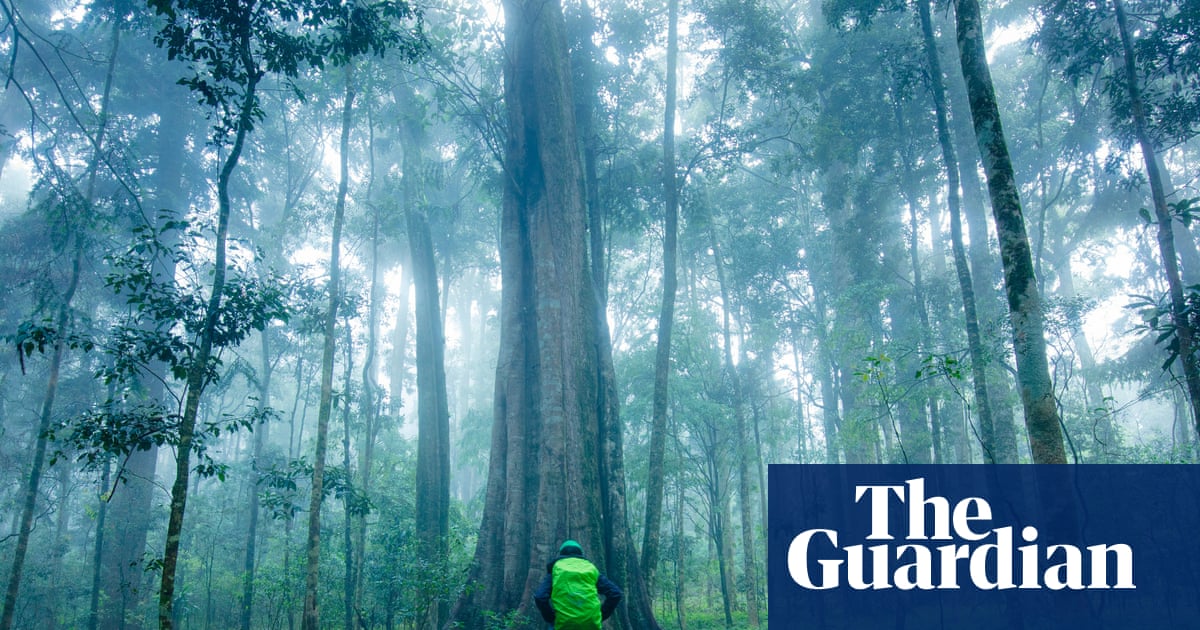PROTECT YOUR DNA WITH QUANTUM TECHNOLOGY
Orgo-Life the new way to the future Advertising by AdpathwayMeeting Australia’s emissions reduction targets is not going to be simple and the Queensland Liberal National government has gone out of its way to make it much harder.
Its energy roadmap, released on Friday, can’t really be interpreted as anything other than a transparently political document, designed to placate climate deniers that have a stranglehold on significant parts of the state’s governing party. You wouldn’t be heading down this path otherwise.
As previously promised, Queensland’s treasurer and energy minister, David Janetzki, confirmed the government plans to repeal the former state Labor government’s target of 80% of the electricity coming from renewable energy by 2035. That target included a now abandoned commitment to shut state-owned coal power plants by that date.
Instead, Janetzki said, coal would “play a critical role” in the energy system until at least 2046, meaning the dirty fossil fuel “will be part of the state’s generation for decades”. He has pledged $1.6bn to help keep coal plants running longer.
The government also wants to more than double the amount of gas-fired power in the state over the next decade, including building a new 400 megawatt gas plant in central Queensland. It has kicked in $479m to help get there.
Janetzki argued there would also be an expansion of renewable energy, promising $400m to help with the transition. But in reality, the state’s plans for large-scale solar and wind have been dramatically scaled back.
Up to 6.8 gigawatts of new renewable capacity is promised by 2030, but this is just a reiteration of what is already planned by private investors, including developments being underwritten by the federal government’s capacity investment scheme.
After that, the treasurer says expansion of clean energy will slow. Only 4.4GW is expected to be built between 2030 and 2035.
If this happens, it will lead to vast amounts more greenhouse gas than currently forecast being pumped into the atmosphere over the next decade. But you wouldn’t know this from reading the energy roadmap. The phrases “climate change” and “fossil fuels” don’t appear.
This is not just a major step back from what was promised under Labor – parts of which renewable energy supporters quietly believed may have been more ambitious than realistic. It also works against the Australian Energy Market Operator’s blueprint for an optimal future power grid.
Janetzki argued his plan was “pragmatic and realistic” and “founded on economics and engineering, and not on ideology”. The latter is a familiar line used by some other Liberal party figures, notably Malcolm Turnbull and Matt Kean, and usually when making the case for renewable energy with firming support as the cheapest and most flexible electricity solution.
The Queensland treasurer has turned this on its head, claiming unreleased government modelling shows that propping up coal, building gas and injecting less solar and wind into the system will save the average household $1,035 a year.
How, exactly? The view among experts is this seems wildly optimistic. It is at odds with other analyses. And it rides roughshod over an obvious point: the coal plants are going to have to be replaced. Pushing that transition beyond a timeframe when the current leadership will be in government doesn’t change that.
Most analysts say the transition is likely to be cheaper if there is a plan for the fossil fuel’s exit. Big energy investors – who these days are overwhelmingly solar and wind and battery investors – will be better prepared to deliver replacement plants if they know when they will be needed. The LNP is stripping away that certainty and sending a signal that investors may be better off building somewhere else.
It’s been doing this for a while, including by cancelling windfarms that had been approved and changing environment laws to make it harder to build them.
after newsletter promotion
Queensland is Australia’s biggest polluting state. It has huge amounts of sun and land, but the lowest proportion of electricity from renewable energy in the country. Even Western Australia, which has no climate targets and is famously in the thrall of fossil fuel companies, performs better.
Over the past year, just 32% of Queensland’s power came from solar, wind and hydro, while 64% came from coal. Strip out booming rooftop solar and the proportion from large-scale big generators was less than 18%.
Compare this with the entire nation, where 42% of electricity was from renewables and 53% from coal. Or compare it with the global picture where, according to the thinktank Ember, renewable energy in the first six months of 2025 surpassed coal generation for the first time, largely thanks to solar generation growing by a third.
The sunshine state could choose to be a leader in this shift but is instead opting to crawl while others sprint.
Meanwhile, its coal plants are often failing – 78 times last summer alone, according to Renew Economy.
Perhaps this is why the premier, David Crisafulli, can keep a straight face while arguing he is still committed to meeting targets of cutting state emissions by 75% by 2035 (compared with 2005 levels) and net zero. Without coal shutdowns and a corresponding surge in renewable energy, he has no plan to get there.
Nationally, the same can be said of the Albanese government’s recently announced 62-70% emissions target range for 2035. The backslide up north ultimately means there will need to be a bigger drive in Canberra to cut pollution – and sooner, rather than later.


 20 hours ago
5
20 hours ago
5
















 English (US) ·
English (US) ·  French (CA) ·
French (CA) ·